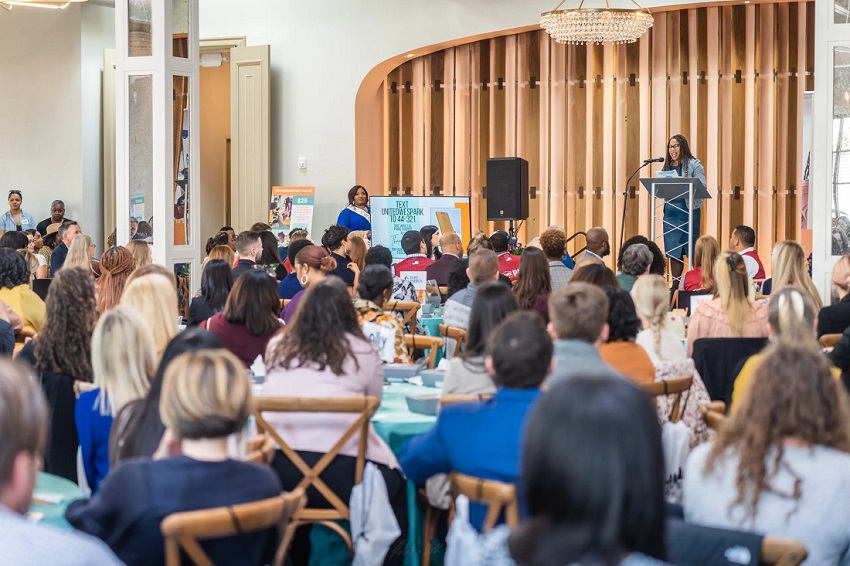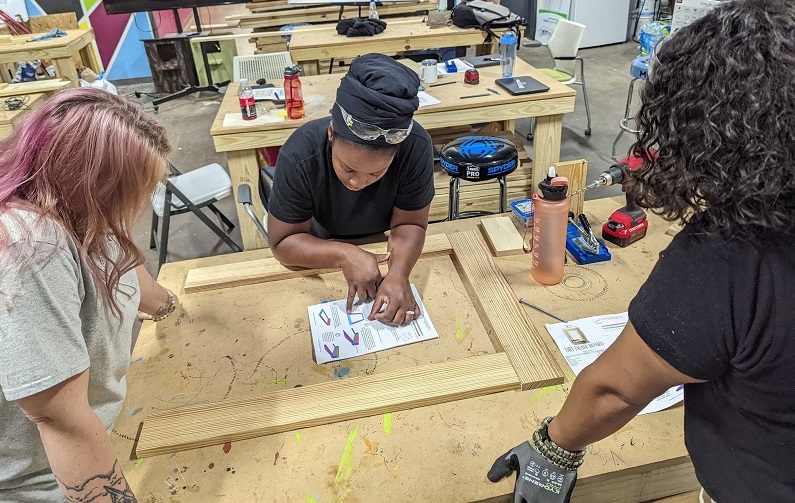
The Benefits Cliff for Women in Skilled Trades: How Growth Stops Before it Begins
Following the awards ceremony at our second annual She Built This City (SBTC) Change Makers Awards luncheon, SBTC Executive Director LaToya Faustin capped off the event with a memorable call to action for construction industry businesses. Here, she introduced the “Benefits Cliff,” remarking how it can halt the path out of poverty for many women and stop them from making life-changing career transitions into the skilled trades.
According to U.S. Census Bureau data, it is estimated that approximately 29.7 million people received some kind of federal assistance in 2021, with a strong portion of these figures, approximately 30%, representing families led by single women. The Benefits Cliff, a term used to describe the sharp drop-off in government assistance that occurs when a person’s income surpasses a certain threshold, can often be an insurmountable barrier to upward mobility and financial stability for many Americans – particularly for women who are looking to begin careers in Construction.

Addressing The Barriers
Unfortunately, due to this Benefits Cliff, many women that rely on benefits to take care of their families do not find the transition into Construction to be worth it. Despite being a very lucrative industry with limitless growth and learning opportunities, the cost, time, and flexibility required to find even entry-level positions can often be just out of reach for mothers and other working women.
For example, as discussed at the Change Maker Awards luncheon, when a woman’s income increases even slightly, the astronomical cost of childcare alone can make it impossible for them to take on additional work or pursue education and training in the trades. This can create a significant barrier for women seeking careers in these fields as they may need to juggle work, education, and childcare responsibilities without the necessary support. With few Construction employers offering assistance with childcare costs in their benefits package, mothers can be left with no choice but to continue working in low-income, low-opportunity jobs.
Aside from single mothers dealing with childcare, another one of the most significant challenges that women face when trying to transition into the skilled trades is the high cost of training and education. Many trade programs require students to pay for their own tools and equipment, as well as tuition and fees. For women who are already struggling to make ends meet, this can be a major financial burden. Additionally, many women may need to take time away from their current job to attend classes, which can further reduce their income.

Lending A Hand
At the policy level, one solution to the Benefits Cliff could be to implement a gradual reduction in assistance as a person’s income increases, eliminating the sharp drop-off, or “cliff.” This would allow women to continue to receive support while they make the transition into the trades and work to increase their income. This could also provide a cushion that would allow women to continually pursue higher-paying jobs in the trades, allowing for a larger, more diverse hiring pool for leadership positions.
Employers can also play a role in addressing the Benefits Cliff problem by reviewing their own benefits, pay, and advancement opportunities. Childcare assistance, proper wages, and clear job progression are all factors that could make or break a women’s career in the trades. By creating and maintaining policies that further support women who are making this transition, they can empower them to make the jump without fear and bolster diversity and inclusion in the industry.
Make It Worth It
The Benefits Cliff, while just one of many barriers that some women may have to overcome, is a barrier to the skilled trades nonetheless. Despite the fact that the construction industry can be extremely lucrative, the loss of benefits that come with a pay raise may end up being more costly for impoverished families, single mothers, or others who rely on this assistance. By reviewing your benefits package as an employer, providing ample growth opportunities, and ensuring that the rate of pay is strongly within the industry expectations for each role, we can ensure that women affected by the benefits cliff receive a helpful hand-up into the Construction industry. With each woman empowered to make that jump into the skilled trades, we can maintain that it is United We Spark!

About the Author: Kaylee Patterson is a Project Administrator at Hoopaugh Grading Company in Charlotte, NC. Kaylee has enjoyed learning about and sharing experiences from the skilled trades since her childhood. Accompanying her father to construction job sites as a young girl, she saw first-hand how those working in the trades shared values of hard work and camaraderie – knowing then that this was the field she wanted to be in. Since then, Kaylee has found a way to marry her love of the skilled trades with her love of writing by working together with She Built This City to help spread the non-profit’s message and share its stories!






